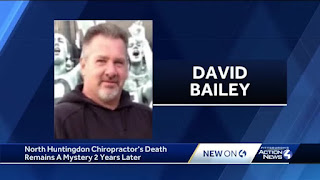The Headlines Tell the Truth—About Us: Media Bias and the Two Americas of Teen Defendants
The Headlines Tell the Truth—About Us: Media Bias and the Two Americas of Teen Defendants
By RICHIE D MOWREY for The Sassy Gazette (The Gossip You Didn’t Know You Needed)
Two teens. Same age. Same crime. But when one is white and the other is Black, the headlines write two entirely different stories.
If you want to know how America really feels about race, don’t look at the polls. Look at the headlines.
When 17-year-old Karmelo Anthony was charged with murder, the press wasted no time. Out came the mugshot, the scathing phrases: “teen killer,” “fatal stabbing,” “violent suspect.” They painted a picture before anyone heard the story.
Now imagine this: what if his name had been Kyle? What if he were white, from a wealthy suburb, and had committed the same act? Would the headline call it a tragic mistake? Would we see a school photo and words like “bright future in jeopardy”?
We already know the answer—because it’s happened over and over.
The Headline Test
Compare these real-world examples:
- White teen charged with manslaughter: “A Life Cut Short: Promising Student Faces Legal Battle”
- Black teen in identical situation: “Teen Suspect Arrested in Brutal Killing”
Different races, different language. Same crime.
This isn’t journalism—it’s performance. It’s public relations for whiteness. And it influences everything: juries, social opinion, even sentencing.
The Weight of Words
A white teen is “troubled.” A Black teen is “dangerous.”
A white teen’s past is “irrelevant.” A Black teen’s past is “evidence.”
A white teen makes a mistake. A Black teen makes a pattern.
Bias doesn’t begin in the courtroom. It begins in the newsroom.
Every time a headline excuses white violence while criminalizing Black adolescence, it’s a warning: justice is not colorblind—it’s color-coded.
Media outlets have the power to shape public empathy. They can make a reader feel sorry for a killer, or feel threatened by a child. That’s not reporting—that’s narrative engineering.
We Deserve Better Journalism
Journalism must do more than recycle mugshots and chase outrage clicks. It must ask better questions. It must humanize equally. It must report with nuance, not bias.
Karmelo Anthony is not a headline. He’s a human being. But in this country, Black boys have to prove that first.
Coming Next: Part IV — “The Silence Is Heavy”
In tomorrow’s chapter, we turn to the family—the heartbreak, the silence, and the grief no one wants to talk about. The pain of being the parent of the accused.
About the Author
RICHIE D MOWREY writes with a scalpel and a torch for The Sassy Gazette, where injustice gets no safe harbor. Richie is committed to truth, transparency, and writing the headlines the mainstream press refuses to print.



Comments
Post a Comment